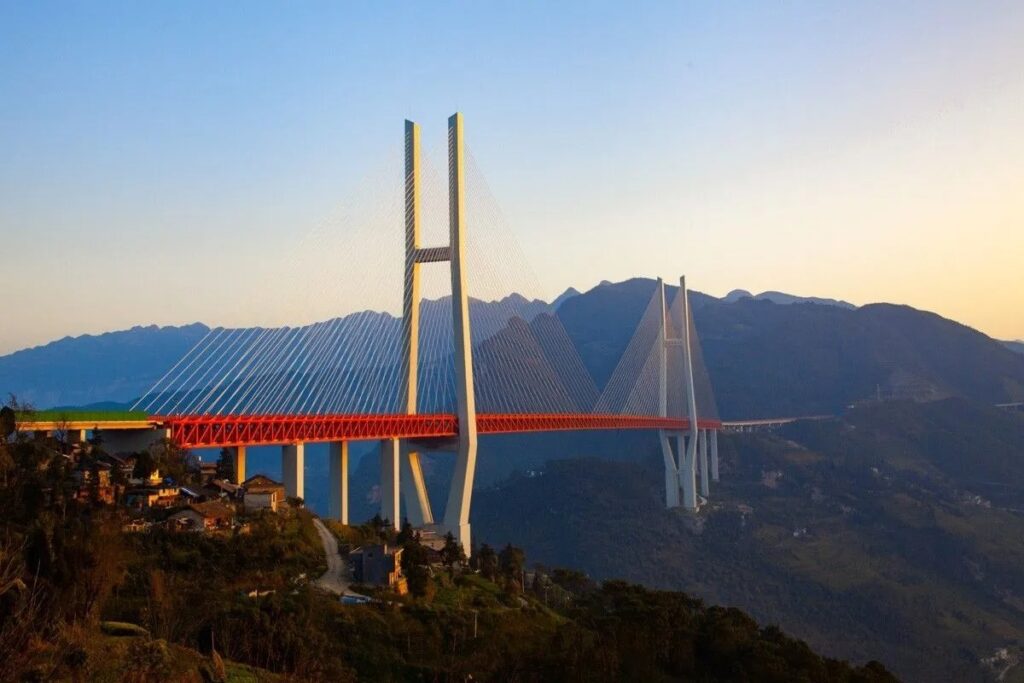
The Beipanjiang Bridge, a testament to human ingenuity and a marvel of modern engineering, holds the title of the world’s highest bridge. Perched an astonishing 565 meters (1,854 feet) above a breathtaking river valley, this colossal structure defies gravity and showcases China’s remarkable progress in infrastructure development.

Completed in 2016, the Beipanjiang Bridge, also known as the Duge Bridge, surpassed all previous records, becoming the first bridge globally to exceed the 500-meter (1,640 feet) height barrier. Spanning a distance of 720 meters (2,362 feet) across the mighty Beipan River, it connects the provinces of Guizhou and Yunnan in a region renowned for its rugged mountainous terrain.

The bridge exemplifies the ingenuity of cable-stayed design, where the deck is directly supported by cables anchored to towering pylons. This innovative approach ensures even weight distribution and allows for longer spans with fewer support structures.

China’s dominance in bridge construction is undeniable. The nation boasts an impressive collection of towering bridges, with ten of the world’s twelve highest bridges located within its western provinces. This remarkable achievement underscores the rapid advancements in Chinese engineering and construction capabilities in recent decades.
However, the Beipanjiang Bridge may soon relinquish its title as the world’s highest. China is currently constructing even more ambitious projects, such as the Huajiang Grand Canyon Bridge with a staggering height of 625 meters (2,001 feet), slated for completion in 2025.
The Yongchang Lancangjiang Bridge, another ambitious undertaking, is planned to reach a height of 610 meters (2,001 feet) and is expected to be completed by 2027. These ongoing projects demonstrate China’s unwavering commitment to pushing the boundaries of engineering and establishing new benchmarks in bridge construction.

Leave a Reply